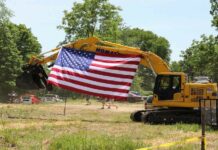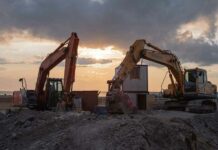The oil field industry, while essential to global energy production, poses serious safety risks for workers. Rigorous operations, heavy equipment, and often remote work environments increase the likelihood of hazards. Recognizing these dangers is crucial to enforcing safety measures that protect workers in these volatile settings. This article explores the most dangerous aspects of oil field work, providing insight into why safety protocols are critical and how workers can remain vigilant in high-risk scenarios.
High Fatality Rates in the Oil and Gas Industry
The oil and gas industry has seen a substantial increase in workplace fatalities. According to the Department of Labor, oil and gas extraction accounted for over 70% of fatal occupational injuries in the private mining sector in 2011, with 112 fatal injuries occurring that year alone. This statistic underscores the sector’s inherent dangers, as it surpasses many other industries in terms of occupational fatalities. Contributing factors include transportation incidents, equipment accidents, and fires or explosions, which are common in high-risk oilfield environments. Acknowledging this grim reality highlights the urgent need for improved safety measures, continuous worker training, and stringent safety protocols.
Risk of Fires and Explosions
Oil fields are especially prone to fires and explosions due to the presence of flammable gases and crude oil. According to Maloney & Campolo, explosions are a common cause for injuries on rigs. A small spark from welding or the incorrect handling of electrical equipment can ignite a fire. Oil field workers are often situated close to gas lines and other potential fuel sources, which intensifies the danger. Explosions can happen suddenly, with little warning, making it essential for workers to be constantly alert.
Preventative measures like enforcing non-smoking policies, using flame-resistant clothing, and regularly inspecting electrical equipment for sparks or leaks are essential. Emergency response training, including fire drills and evacuation protocols, should be part of every oil field worker’s training.
Hazardous Equipment and Machinery
Oil field workers frequently operate and maintain heavy machinery such as drilling rigs, pumps, cranes, and hydraulic lifts, all of which present risks when mishandled or improperly maintained. The scale and power of this equipment mean that even minor mechanical issues can have severe consequences. Injuries from heavy equipment include crushed limbs, broken bones, and in the worst cases, fatalities. Workers are often in confined spaces with limited maneuverability, increasing the risk of accidents if equipment malfunctions.
Improper training or rushing through tasks can lead to mishandling of machinery. Companies that invest in comprehensive training programs can greatly reduce the risk of injury. Regular maintenance and inspections should also be a priority, ensuring that any faults are addressed before the equipment is back in operation.
Exposure to Toxic Chemicals
Oil extraction involves handling hazardous chemicals like benzene, hydrogen sulfide, and other volatile compounds. Long-term exposure to these chemicals can lead to serious health issues, including respiratory problems, cancers, and neurological damage. Workers in close proximity to these toxins are often at risk of chemical burns, inhalation hazards, and skin irritation, making proper protective equipment essential.
For safety, oil companies must enforce the use of respirators, gloves, and protective clothing. Routine air quality monitoring is another essential safety measure to detect high concentrations of toxic substances. Emergency procedures should be in place in case of accidental exposure, ensuring workers can respond swiftly and safely.
Working in Extreme and Remote Environments
Oil fields are often located in remote areas, subjecting workers to harsh and unpredictable weather conditions, from extreme cold to sweltering heat. These conditions pose their own health risks, such as frostbite, heatstroke, and hypothermia. Additionally, the isolation of these worksites means that medical assistance may be hours away, further increasing the risks if an accident occurs.
Workers should be equipped with suitable clothing and gear to protect against the elements, and companies must provide access to rest areas and hydration stations. Emergency response plans should be in place to facilitate rapid transport to medical facilities, ensuring that in case of an injury, workers can receive treatment quickly.
Physical Strain and Fatigue
The demanding physical nature of oil field work can lead to extreme fatigue and physical strain. Workers often put in long hours in challenging conditions, lifting heavy objects, climbing rigs, and performing repetitive tasks. Fatigue can impair judgment and slow reaction times, increasing the likelihood of accidents, especially when operating machinery or working at heights.
Companies can reduce risks by setting limits on shift lengths, allowing for sufficient rest periods, and encouraging workers to take regular breaks. Ensuring that tasks are shared or rotated can also alleviate strain, reducing the risk of overexertion injuries.
Falls and Injuries from Heights
Many oil field tasks require workers to operate at elevated heights, which increases the risk of falls. Workers may need to climb onto rigs, scaffolding, or tall machinery to perform maintenance, often in windy or unstable conditions. Even with harnesses and guardrails, the risk of falls remains high due to equipment failure, missteps, or other unexpected factors.
Using fall protection systems like harnesses and railings is critical, as is training workers to use this equipment effectively. Regular inspections of ladders, platforms, and safety gear help prevent accidents, and all elevated work areas should have reliable guardrails and secure footing.
Transportation Accidents
Transporting workers and equipment to and from remote oil field locations frequently involves long-distance travel, often in rugged terrain. Road conditions, weather, and fatigue all contribute to the risk of transportation accidents. When specialized equipment like helicopters or trucks is used to transport workers to offshore platforms or distant sites, the stakes become even higher due to the potential for severe crashes or mechanical failures.
Properly trained drivers and well-maintained vehicles are essential to reducing these risks. Companies should also establish clear protocols for checking weather and road conditions before any transport, as well as limits on driving hours to prevent fatigue-related accidents.
Electrical Hazards
Electricity is a critical component of oil field operations, powering equipment, lighting, and control systems. However, it also presents a significant hazard if wiring is exposed, or if workers encounter faulty equipment. Electrocution risks are heightened when working in damp environments or when dealing with high-voltage equipment. Electrical injuries can range from burns to fatal shocks, especially if safety protocols are overlooked.
To mitigate these risks, strict adherence to lockout/tagout procedures is essential, ensuring that any electrical equipment is properly de-energized before maintenance. Workers should wear insulated gloves and clothing and regularly inspect electrical systems for damage or wear. Regular safety training on recognizing electrical hazards can also reduce the chance of accidental electrocutions.
Improving Safety Standards in Oil Fields
Given the high risks involved in oil field work, continuous improvement in safety standards is paramount. Companies are responsible for implementing comprehensive training programs, ensuring that workers are educated on both the dangers and the best safety practices. Equipment maintenance, emergency response protocols, and personal protective equipment are fundamental to keeping workers safe.
An emphasis on a safety-first culture within the industry, where workers are encouraged to voice concerns and report hazards, can lead to more proactive safety management. Oil field work may always involve a certain level of risk, but through vigilance, training, and effective safety protocols, many of these dangers can be minimized, allowing workers to perform their jobs in a safer environment.





























